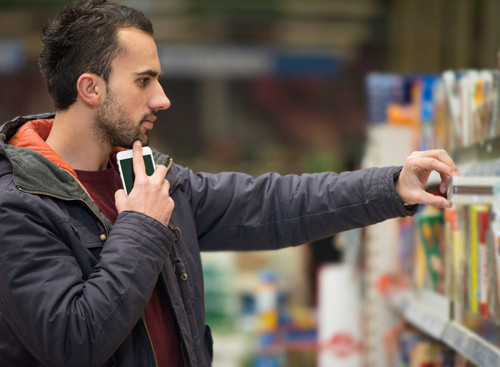This series of blog posts have been compiled from the NRF 2015 interview of Atul Jalan, CEO at Manthan by Adam Silverman, Principal Analyst at Forrester. If you missed the live event, catch up with the latest trends in retail analytics and how the new role of analytics can help transform your organization in an omni-channel world.
As mentioned in our first post, retailers can respond to the changes brought by consumerization of technology, through digitalization.
By harnessing the digital forces of consumerism – mobile and pervasive computing, big data and analytics, cloud computing, social media, artificial intelligence and robotics, retailers have the opportunity to ‘digitalize’ their businesses.
In our last post we discussed how cloud computing is offering CIOs the flexibility, scalability, and quick adoption timelines needed to handle huge volume of customer data, enabling them to ensure the shopper experience is consistent across their purchase journey.
Let’s look at some of the other ways digitalization can impact retail performance to deliver on the 4Cs of the shopper experience:
1. Customer centricity has to begin with building an N=1 understanding of the customer – Customer analytics.
Retailers need a 360 degree view of their customers, a comprehensive topography of each customer and their category, brand and channel preferences.
The retailer should know where the customer buys, what she buys, when she buys this, what else she buys, what is the context of her purchase – emotion-wise, location-wise and channel-wise.
The retailer has to stay close to the customer’s changing and emerging needs based on her life-stage and lifestyle; he has to know her preferred path to purchase and her preferred path to fulfillment.
2. Context based, math-driven Uber personalization of offers, deals, and information.
The mass production that came in the wake of industrial revolution, achieved democratization of access. From there we travelled to mass customization. And what we are now heading towards is uber-personalization.
Digitally empowered consumers are trending toward indulging their desire for unique, customized products and services.
This means that the “one size fits all” model for products or services is definitely out of date.
Imagine the possibilities. Customers could walk-in to stores enabled by consumer grade devices based on technologies such as 3D printing and have an experience that is entirely personalized!
Retailers need to able to serve up uber-personalized experience by offering – curated content, personalized offer and promotions, item-to-item collaborative filtering to offer shopping suggestions in real time, pushing personalized offers onto a customer’s mobile phone.
3. Clienteling.
Today, the store associate is right at the end of the value chain, and has very little information or tools at his or her disposal to create an engaging customer experience.
This situation is very similar to the airline business where the crew, which spends the maximum time interacting with customers, has the least information about them.
Airlines today are addressing this by enabling their crew with customer engagement solutions. We believe moving forward, store associates will coalesce into two specializations – customer-facing associates providing increasingly sophisticated customer experiences and fulfillment-centric associates, enabling complex delivery options.
Store associates will necessarily need to empowered with information on their mobiles about the customer, such as profile attributes, transactions and interactions, likes and dislikes; along with analytics-driven recommendations on up-sell and cross-sell, in-depth product information, previous customer feedback, and other relevant information.
Companies like Manthan are helping retailers with such functionalities by equipping store associates with a mobile/tablet device that combines, for example, inventory management, in-store operational analytics, walkie-talkie functionality, mobile POS capability, the ability to recommend up-sell and cross-sell through clienteling applications and connectivity to a receipt printer.
4. Collaboration with Customers.
The Consumerization of Technology means that customers, not retailers, are shaping and will continue to shape, the future of retailing.
This implies that retailers will have no choice but to collaborate with and include customers in the innovation process. In this regard, collaboration is not merely soliciting and managing customer feedback on customer service issues. Nor is it just about tapping into collaborative influencing techniques, such as crowdsourcing to gain customer feedback through the ‘wisdom of the crowds’.
To win the retail future, the retailer’s innovation process will have to dramatically involve way to leverage the human propensity for creating and co-creating, which consumers, through technology, are tapping into more and more.
Retailers can achieve in by including customers in initiatives such as product design, marketing campaigns, product launches, price and demand discovery, and viral marketing.
“The Consumerization of Technology means that customers, not retailers, are shaping and will continue to shape, the future of retailing.”
Manthan has taken a large part of its product portfolio onto cloud and has created a SaaS engagement model for its core customer – the retailer. This shift, which Manthan calls Switch On, is a further example of its interests in the consumerization of advanced technology.
Where Consumerization is taking us
The recent Gartner 2015 Magic Quadrant for Business Intelligence and Analytics Platforms elaborates extensive on how the market is undergoing a fundamental shift.
In the past decade, BI and analytics investments were always IT-driven. Analysts and information consumers created reports which were pushed to business users. Now, however, we see that business users are the ones driving analytical purchases, and demanding interactive styles of analysis and insights.
IDC forecasts the traditional analytics business to be worth $59.2 billion by 2018. And A T Kearney pegs big data, software and services at $114 billion by 2018. Remove the word ‘traditional’ from the equation and add ‘user-friendly’ and you know why Manthan is focusing on Consumerization of Analytics.






